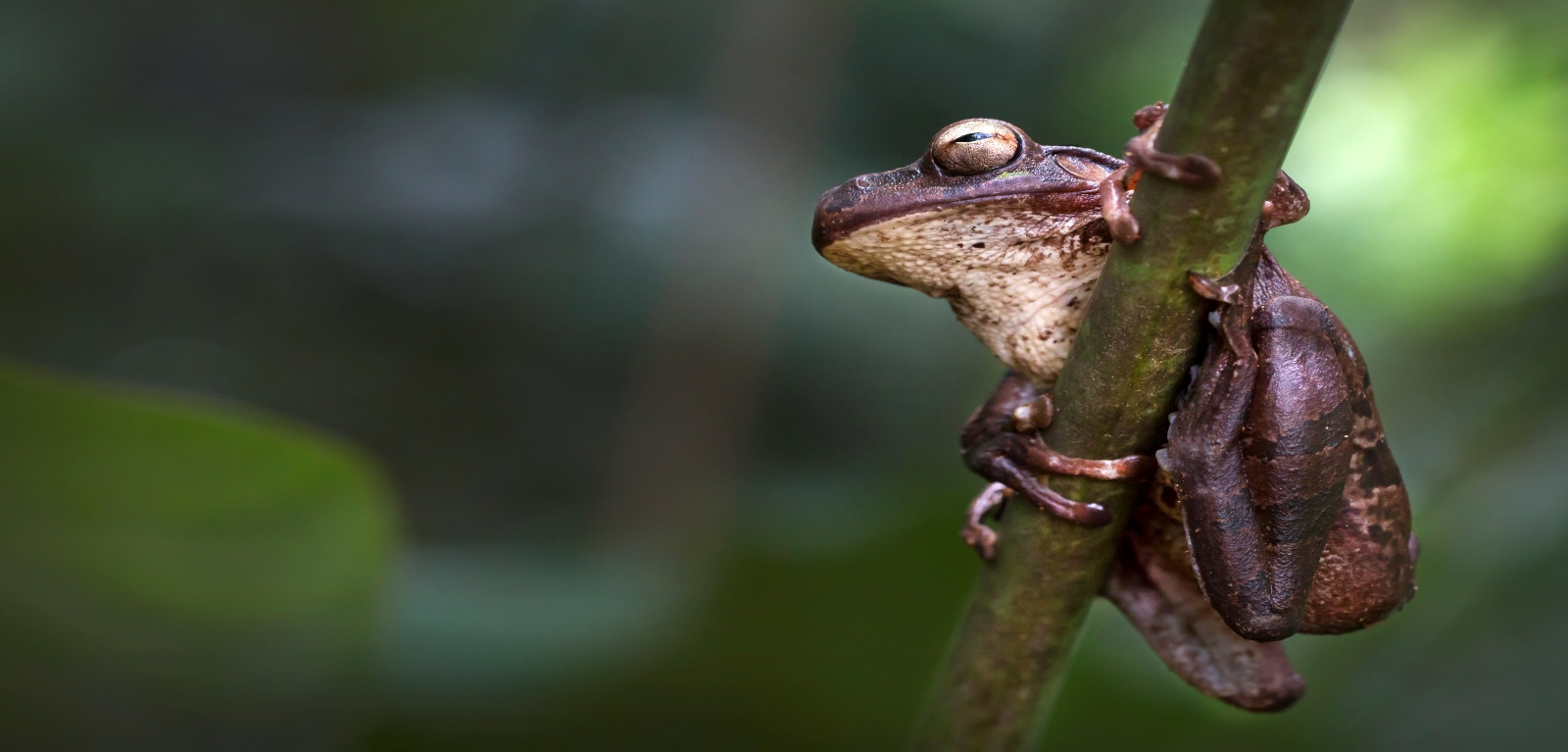Researchers discover how amphibians differ in caring for their young
Research led by Queen’s University Belfast has revealed the diverse ways that amphibians care for their young determine how many eggs they lay.

Most amphibians abandon their young when they lay their eggs.
Among those amphibians that do care, parental care can be strikingly different. This includes attendance of the young; transportation of young from one pool to another; protection of young in or on the parent’s body; and feeding of larvae or juveniles. This study is the first to demonstrate that certain species with parental care of their young, such as the ‘marsupial frogs’, invest differently in egg and clutch size or number of eggs than species lacking care, such as common frogs, who abandon their eggs in the wild.
The research team looked at over 800 amphibian species from all over the world, and from their entire diversity (frogs, salamanders and caecilians) found that amphibians with direct development and those that lay eggs on land had larger eggs and smaller clutches.
The research showed that some form of parental care and the habitat in eggs and tadpoles develop (aquatic or terrestrial) determine the number and size of the eggs that females lay. Larger eggs are energetically costly to produce for the mother, and so come in small clutches. Because eggs are eaten by many predators, especially if not cared for, females that abandon their eggs typically produce many small eggs. However, if the eggs are cared for by either the mother or the father or both parents, mothers change the size and number of eggs they lay. How many eggs and how big females lay depend on the type of care that parents provide.
Amphibians exhibit huge diversity in care forms - they can protect eggs, tadpoles or juveniles; transport eggs or tadpoles; brood eggs or tadpoles in their vocal sacs, stomachs or in skin pushes on their back; they can feed tadpoles; and some species can give birth to live offspring. However, this diversity has been typically ignored in previous studies that concluded that parental care has no influence on the egg size - a result that clashed with theoretical predictions.
The research has been published in the PLOS Biology journal and was conducted in collaboration with the University of Hull and the University of Reading.
Dr Isabella Capellini, from Queen’s University’s School of Biological Sciences and lead author of this study, said: “Our work in this study demonstrates that species such as some Malagasy poison frogs with terrestrial eggs have larger eggs in smaller clutches, but different forms of parental care have different influence on the tradeoff between egg size and egg number. For example, species that brood their eggs or tadpoles on or inside the body, can only care for few large eggs likely because the parent’s body has limited room. However, those that guard their eggs, can afford to protect larger eggs without reducing clutch size. Instead, frogs that feed their larvae have few small eggs, probably because constant feeding after hatching makes producing initially large eggs unnecessary. These results have important implications as they demonstrate that considering the diversity in care forms is important.”
Amphibians, such as frogs, toads, salamanders and newts, in particular, have become the iconic example of human-induced extinctions, given that their declines exceed those of any other group of animals on Earth. Over 40 per cent of amphibians currently face extinction risk.
Dr Capellini added: “Our study suggests that amphibians with diverse forms of care may be under different risk of extinction. We will build upon the knowledge we now have to better understand whether amphibians with diverse forms of care may be under different risk of extinction.”
Media
For media inquiries please contact comms.officer@qub.ac.uk